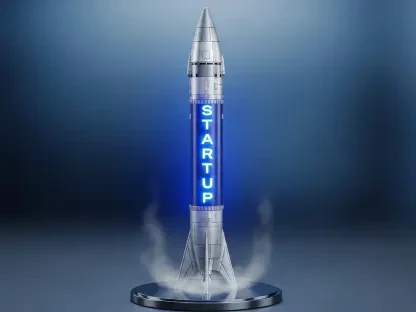A Glimpse into a Tech-Driven Future
Imagine a business landscape where every operational decision is guided by intelligent software, predicting outcomes with uncanny precision and automating tasks once thought impossible to streamline. This is the reality unfolding in the U.S. Software as a Service (SaaS) market, where artificial intelligence (AI) is not just an enhancement but a fundamental catalyst for growth. As of 2025, the integration of AI into SaaS platforms is reshaping industries, from healthcare to finance, by offering unprecedented efficiency and scalability. This market analysis explores the transformative trends, data-driven projections, and strategic insights surrounding this dynamic sector. The purpose is to illuminate the path forward for stakeholders, highlighting why understanding these developments is critical for staying competitive in a rapidly evolving digital economy.
Unpacking the SaaS and AI Synergy
Historical Growth and Current Momentum
The U.S. SaaS market has witnessed remarkable evolution, transitioning from basic cloud-hosted solutions to sophisticated platforms infused with AI capabilities. Since its early days, SaaS has provided businesses with subscription-based access to software, eliminating the need for costly on-premises infrastructure. As of now, in 2025, the market is experiencing a surge, propelled by AI technologies like machine learning and natural language processing (NLP). These tools have elevated SaaS from a mere utility to a strategic asset, enabling features such as predictive analytics in customer relationship management (CRM) tools used by companies like HubSpot. This historical context underscores the market’s readiness for further expansion, setting a strong foundation for the years ahead.
Market Size Projections and Economic Drivers
Looking toward 2032, projections indicate a substantial increase in the U.S. SaaS market size, driven by widespread adoption of AI-enhanced solutions across various sectors. Analysts forecast a compound annual growth rate that reflects growing demand among small and medium-sized enterprises (SMEs) for cost-effective, scalable software. The economic environment supports this trend, with businesses prioritizing digital transformation to remain agile amid competitive pressures. Industries such as retail and healthcare are leading the charge, leveraging AI-driven SaaS for inventory optimization and patient care analytics. However, potential risks like market saturation loom, necessitating innovation to sustain this upward trajectory.
Technological Innovations Fueling the Surge
At the heart of this growth lies a wave of technological advancements that are redefining SaaS functionality. AI technologies, particularly machine learning algorithms, allow platforms to automate repetitive tasks, while NLP enhances user interactions through chatbots and virtual assistants. For instance, financial SaaS tools now offer real-time fraud detection, a capability that was unimaginable a decade ago. Despite these advancements, challenges such as high implementation costs and data privacy concerns persist, requiring robust security frameworks. Balancing cutting-edge features with affordability remains a pivotal factor for broader market penetration.
Regional Variations and Adoption Patterns
Geographic disparities within the U.S. significantly influence SaaS adoption rates and growth potential. Tech hubs in the Northeast and West, bolstered by strong infrastructure, exhibit the highest integration of AI-driven SaaS, with major corporations driving demand. In contrast, regions like the Midwest and Southeast show slower uptake due to limited access to advanced resources, though they present untapped opportunities for expansion. Tailored strategies, such as offering region-specific pricing models or localized support, could bridge these gaps. Dispelling the myth that SaaS is exclusively for large enterprises is also essential, as affordable solutions are increasingly accessible to smaller players.
Competitive Landscape and Industry Dynamics
The competitive arena of the U.S. SaaS market is intense, with both established giants and agile startups vying for dominance through AI innovation. Companies are investing heavily in research and development to differentiate their offerings, often focusing on niche applications like AI-powered supply chain management in logistics. Strategic partnerships and mergers are becoming common as firms seek to consolidate expertise and expand market share. This environment fosters a culture of rapid adaptation, though it also heightens the risk of over-competition, pushing players to continuously refine their value propositions to stand out.
Reflecting on the Path Traveled
Looking back, the analysis of the U.S. SaaS market revealed a transformative journey marked by AI’s profound impact on functionality, adoption, and competition. From the robust growth projections to the regional nuances that shaped implementation, the data painted a picture of a sector poised for monumental strides by 2032. The economic drivers and technological innovations stood out as critical pillars that supported this upward momentum. Key implications emerged around the necessity for businesses to adapt swiftly to maintain relevance in a crowded field. For those navigating this space, actionable steps included investing in scalable AI solutions, forging alliances to access cutting-edge tools, and closely monitoring regional trends to tailor expansion efforts. As the landscape continues to evolve, staying ahead demands not just reaction but proactive anticipation of future shifts in technology and market needs.









